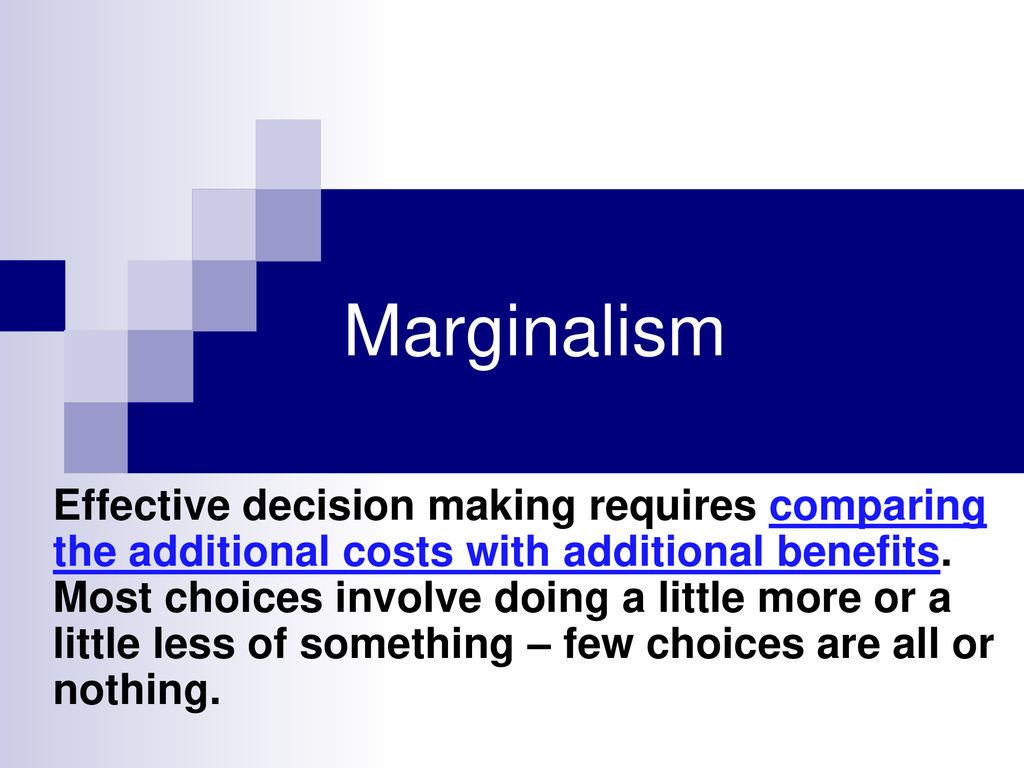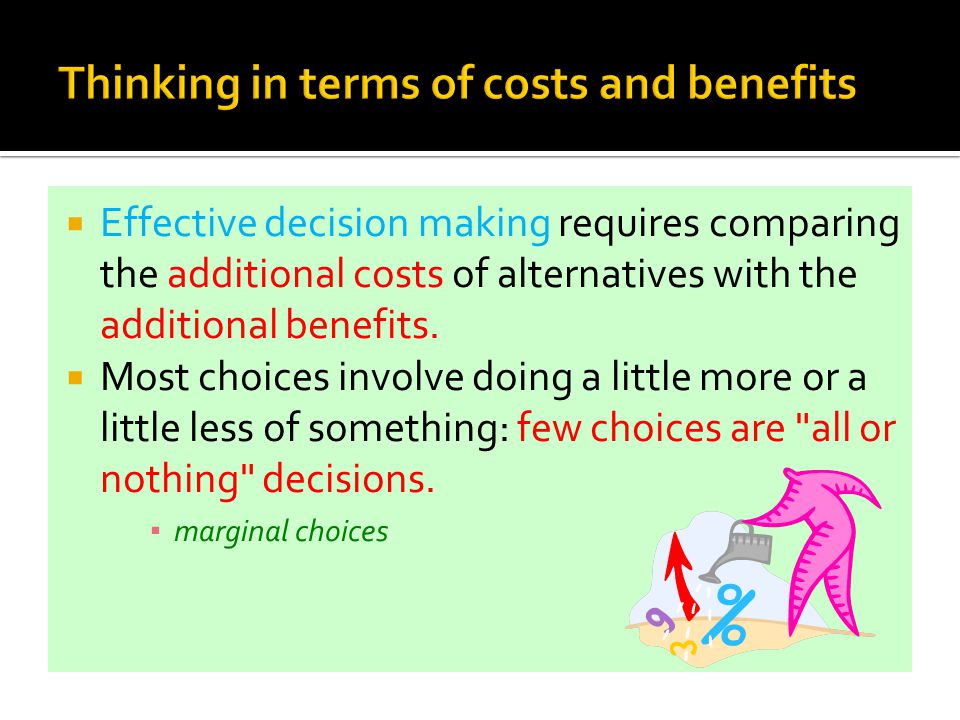Most Choices Involve Which Involves Comparing The Benefits
/What-factors-influence-microeconomic_round2-b5aa0bb64b7045819fc19c99649d7482.png)
Every day, we navigate a complex web of decisions, from the mundane to the monumental. These choices, often taken for granted, are rarely spontaneous. They are typically the result of a subconscious, and sometimes conscious, weighing of potential advantages.
The ubiquity of this comparative process underscores a fundamental aspect of human behavior: our inherent drive to optimize outcomes. Ignoring this dynamic can lead to flawed decision-making, both on a personal and societal level.
At its core, most decision-making involves a systematic evaluation of potential benefits. This process, often overlooked, has profound implications for understanding human behavior and societal trends.
The Foundation of Choice: Benefit Comparison
The essential truth that most choices involve comparing benefits is not merely an observation, but a cornerstone of decision theory. It's a concept studied across various disciplines, including economics, psychology, and even neuroscience.
Behavioral economics, in particular, sheds light on how individuals deviate from strictly rational calculations. While theoretically, humans should weigh pros and cons with impartiality, cognitive biases often influence the process.
Loss aversion, for example, suggests that the pain of a potential loss looms larger than the pleasure of an equivalent gain. This psychological asymmetry can skew our judgment, leading to suboptimal choices.
Economic Models: Rationality and its Limits
Traditional economic models often assume that individuals are rational actors who consistently seek to maximize their utility. This implies a careful assessment of potential benefits and costs, leading to decisions that yield the greatest possible advantage.
However, the reality is far more nuanced. As Herbert Simon, a Nobel laureate in economics, pointed out, humans operate under conditions of bounded rationality.
We have limited information, cognitive capacity, and time to make decisions. Therefore, we often resort to heuristics, or mental shortcuts, to simplify the decision-making process.
Heuristics and Cognitive Biases
Heuristics can be useful in navigating everyday choices, but they can also lead to systematic errors. For example, the availability heuristic leads us to overestimate the likelihood of events that are easily recalled, such as dramatic news stories.
Confirmation bias causes us to seek out information that confirms our existing beliefs, while ignoring evidence to the contrary. These biases can significantly distort our perception of potential benefits.
Understanding these cognitive pitfalls is crucial for making more informed decisions. It allows us to be more aware of our own biases and to seek out diverse perspectives.
Applications in Various Domains
The principle that most choices involve comparing benefits has far-reaching implications across various domains. Consider, for example, healthcare decisions.
Patients often face complex choices regarding treatment options, each with its own set of potential benefits and risks. Doctors guide them through this process, weighing the advantages of one treatment against another.
In the realm of public policy, governments routinely make decisions that involve tradeoffs between different goals. For instance, environmental regulations may yield significant long-term benefits, but could also impose short-term economic costs.
Ethical Considerations
The process of comparing benefits also raises important ethical considerations. Whose benefits are being considered? And how are those benefits being weighed against potential harms?
Utilitarianism, a philosophical framework, suggests that the best action is the one that maximizes overall well-being. However, applying this principle in practice can be challenging, as it requires quantifying and comparing the benefits and harms to different individuals or groups.
Furthermore, some argue that certain values, such as human rights, should not be subjected to cost-benefit analysis. These values are considered intrinsically valuable, regardless of their potential economic or social consequences.
The Future of Decision-Making
Advances in technology are transforming the landscape of decision-making. Artificial intelligence (AI) and machine learning algorithms are increasingly being used to analyze data and identify potential benefits.
However, the use of AI in decision-making also raises ethical concerns. Algorithms can be biased, reflecting the biases of the data they are trained on. This can lead to unfair or discriminatory outcomes.
Looking ahead, it is crucial to develop AI systems that are transparent, accountable, and aligned with human values. Only then can we harness the power of technology to make better, more equitable decisions.
Conclusion: A Continuous Process of Evaluation
Ultimately, the realization that most choices involve comparing benefits highlights the continuous evaluation we undertake. Recognizing its pervasiveness and inherent biases is the first step toward improving decision-making at all levels.
From personal choices to complex policy decisions, a nuanced understanding of the benefits is essential. By embracing a more reflective and informed approach, we can strive to make choices that are both rational and ethical.
In the long run, the betterment of individual lives and societal progress relies on this constant, critical assessment of the advantages and disadvantages that shape our world. This leads to more fulfilling lives and a more equitable society for all.












